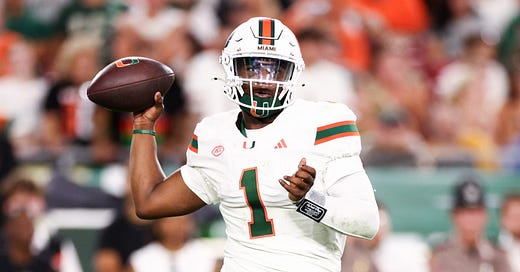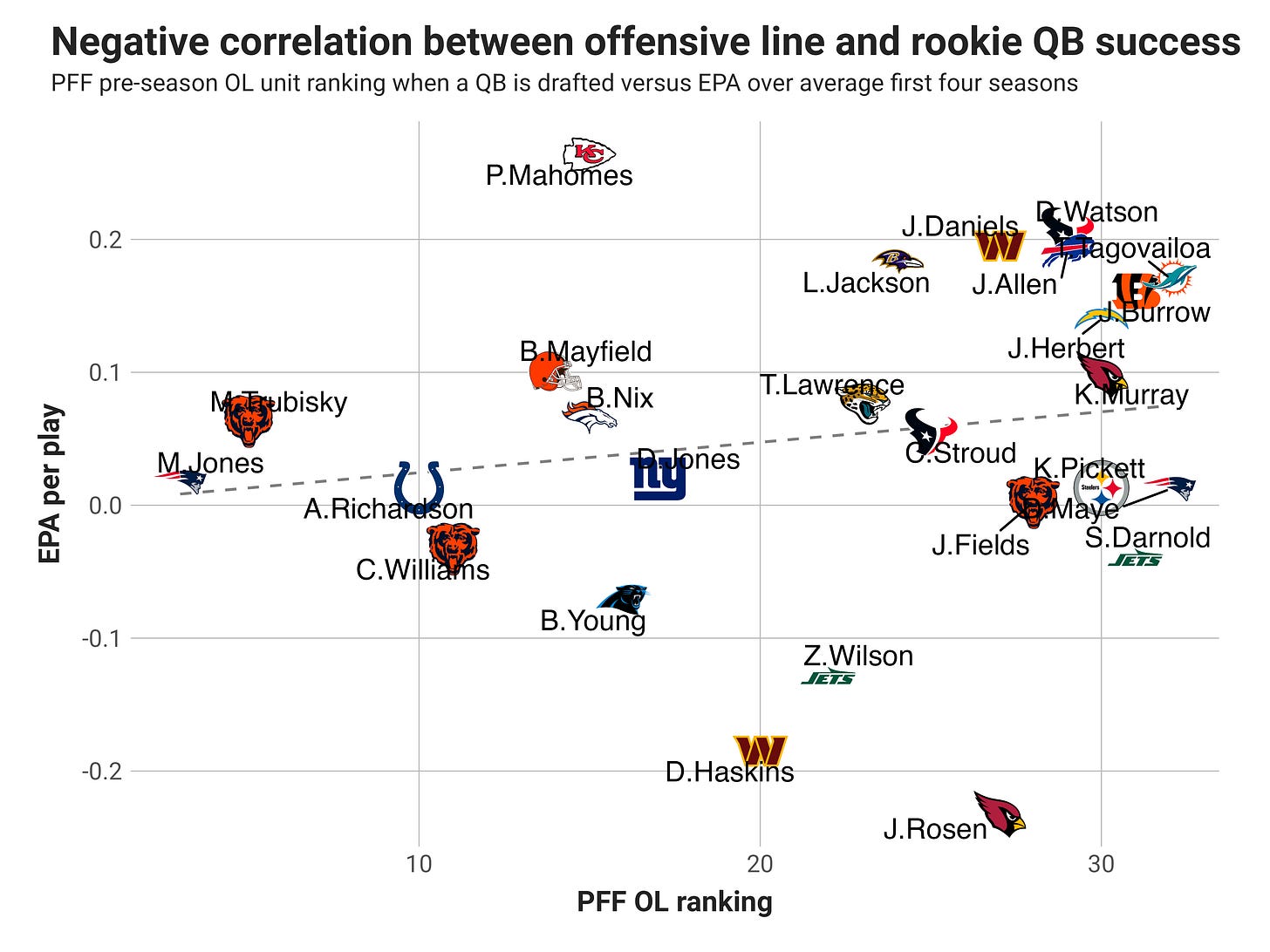The Titans look like a mess: They should still look to draft a quarterback
There's little evidence that teams should have confidence in offensive surroundings before drafting their potential franchise quarterback
The idea for this analysis came from listening to the The SumerSports Show with Lindsay Rhodes interviewing Mina Kimes on the 2025 NFL draft. One topic of discussion was whether the Tennessee Titans should take a quarterback at No. 1 overall. Kimes initially said she wouldn’t take a quarterback if she was the decision-maker for the Titans, pointing her feeling that it isn’t “a good environment for a quarterback”. She immediately follows that up with the counter that she thought the same thing about the Washington Commanders going into last season, so “who knows?”
I think this is an interesting topic to explore to say what the historical evidence says, not only about how much the surrounding environment can help or hurt the career development of a rookie quarterback, but, just as importantly, our ability to predict how good the surrounding environment will be for a quarterback.
HOW TO MEASURE SURROUNDING ENVIRONMENTS
Let’s get into the metrics and data I chose to help us gather some evidence of the question at hand. Because we’re making decisions before the NFL draft and even before the rookie seasons begin, we have to look at pre-rookie-year projections as proxies for team surrounding environments in our analysis. I decided to use PFF’s pre-season offensive line rankings and ESPN’s Bill Barnwell’s offensive weapon (RBs, WRs, TEs). We have both of these rankings going back to 2017.
The best measurement I can think of using for quarterback success is EPA per play. I’m restricting performance to the first four seasons of quarterbacks’ careers, only playing for the teams that drafted them, as some quarterbacks moved to a new team within their four-year rookie contract windows.
Some recently drafted quarterbacks don’t have the full four years of historical performance, but I kept them in the sample anyway to increase its breadth (minimum of 300 total plays). Plus, only one or two years of quarterback performance is more indicative of career success than many would think. I also restricted the analysis to quarterbacks taken in the first round of the NFL draft.
Plotting rookie-year, pre-season PFF offensive line rankings against quarterback EPA per play during their first four seasons shows no meaningful correlation between assumed offensive lines’ relative strengths and the early career performance of drafted quarterbacks. In fact, there’s a bit of a negative correlation. Some of the biggest quarterback draft busts did indeed come into situations with relatively bad offensive lines, like Zach Wilson, Dwayne Haskins and Josh Rosen. But those offensive line units weren’t projected to be horrible, ranking in the 20s.
Patrick Mahomes was, of course, the biggest quarterback hit drafted since 2017, but his offensive line was only seen as being average (15th ranked) going into his rookie season. The other biggest hits in terms of early career EPA per play among quarterback selections all had poorly ranked offensive lines. The 2020 quarterback class of Joe Burrow, Tua Tagovailoa and Justin Herbert joined the three worst offensive lines as ranked by PFF that pre-season. Josh Allen landed on a Buffalo Bills team with the 29th ranked pre-season offensive line in 2018, and Lamar Jackson with the 24th ranked unit the same season. Things have trailed off mightily in Deshaun Watson’s recent performance, but he had an outstanding start to his career with the Houston Texans, despite their offensive line ranking 29th going into his 2017 rookie season. It might be premature to label Jayden Daniels a definitive hit, but it’s fair to say he wasn’t held back by a Washington Commanders’ offensive line that ranked 27th going into last season.
Keep reading with a 7-day free trial
Subscribe to Unexpected Points to keep reading this post and get 7 days of free access to the full post archives.






